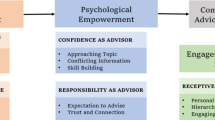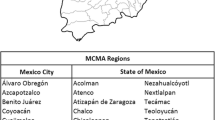Abstract
Health impact of exposure to air pollution is a public health concern. The aim of this study was to investigate an extended parallel process model (EPPM)-based mobile phone text message intervention for improving protective behaviors against air pollution among pregnant women. In this randomized controlled trial (IRCT2016102810804N8), 130 pregnant women were randomly assigned into either experimental or control groups. A valid and reliable questionnaire was used to collect data. Experimental group received mobile phone intervention on a daily basis for 2 months. Control group received usual care, only. Data were analyzed using SPSS 15 applying t test, chi-square, and Wilcoxon and Mann-Whitney U test. Although before intervention, there were no significant differences between different structures of EPPM (P > 0.05), after intervention, there were statistically significant differences between perceived severity, response efficacy, self-efficacy, and protective behaviors between two groups (P < 0.05). Implementing EPPM based-mobile phone intervention could promote protective behaviors against air pollution among pregnant women. The present study might be used as a framework for evidence-based health promotion regarding air pollution risk communication and self-care behaviors. Trial registration: IRCT2016102810804N8

Similar content being viewed by others
References
Adebayo G, Neumark Y, Gesser-Edelsburg A, Abu Ahmad W, Levine H (2017) Zika pandemic online trends, incidence and health risk communication: a time trend study. BMJ Global Health 2(3):e000296. https://doi.org/10.1136/bmjgh-2017-000296
Akulume M, Kiwanuka SN (2016) Health care waste segregation behavior among health workers in Uganda: an application of the theory of planned behavior. J Environ Public Health 2016:8132306. https://doi.org/10.1155/2016/8132306
Araban M, Tavafian S, Zarandi S, Hidarnia A, Gohari M, Prochaska JM, Laluie A, Montazeri A (2013) Introducing a new measure for assessing self-efficacy in response to air pollution hazards for pregnant women. J Environ Health Sci Eng 11(1):16. https://doi.org/10.1186/2052-336X-11-16
Araban M, Tavafian SS, Zarandi SM, Hidarnia AR, Burri A, Montazeri A (2017) A behavioral strategy to minimize air pollution exposure in pregnant women: a randomized controlled trial. Environ Health Prev Med 22(1):26. https://doi.org/10.1186/s12199-017-0633-8
Bandura A (1977) Self-efficacy: toward a unifying theory of behavioral change. Psychol Rev 84(2):191–215. https://doi.org/10.1037/0033-295X.84.2.191
Choi HJ, Krieger JL, Hecht ML (2013) Reconceptualizing efficacy in substance use prevention research: refusal response efficacy and drug resistance self-efficacy in adolescent substance use. Health Commun 28(1):40–52. https://doi.org/10.1080/10410236.2012.720245
Collaborators GL (2017) Estimates of the global, regional, and national morbidity, mortality, and aetiologies of lower respiratory tract infections in 195 countries: a systematic analysis for the Global Burden of Disease Study 2015. Lancet Infect Dis 17(11):1133–1161. https://doi.org/10.1016/s1473-3099(17)30396-1
Dastoorpoor M, Idani E, Goudarzi G, Khanjani N (2017) Acute effects of air pollution on spontaneous abortion, premature delivery, and stillbirth in Ahvaz, Iran: a time-series study. Environ Sci Pollut Res Int. https://doi.org/10.1007/s11356-017-0692-9
Estarlich M, Ballester F, Davdand P, Llop S, Esplugues A, Fernández-Somoano A, Lertxundi A, Guxens M, Basterrechea M, Tardón A, Sunyer J, Iñiguez C (2016) Exposure to ambient air pollution during pregnancy and preterm birth: a Spanish multicenter birth cohort study. Environ Res 147:50–58. https://doi.org/10.1016/j.envres.2016.01.037
Finitsis DJ, Pellowski JA, Johnson BT (2014) Text message intervention designs to promote adherence to antiretroviral therapy (ART): a meta-analysis of randomized controlled trials. PLoS One 9(2):e88166. https://doi.org/10.1371/journal.pone.0088166
Glanz K, Rimer BK, Viswanath K (2008) Health behavior and health education: theory, research, and practice. John Wiley & Sons, Hoboken
Gouveia N, Junger WL (2018) Effects of air pollution on infant and children respiratory mortality in four large Latin-American cities. Environ Pollut (Barking, Essex : 1987) 232:385–391. https://doi.org/10.1016/j.envpol.2017.08.125
Hansel NN, McCormack MC, Kim V (2016) The effects of air pollution and temperature on COPD. Copd 13(3):372–379. https://doi.org/10.3109/15412555.2015.1089846
Jasemzadeh M (2016) The effectiveness of message-framing based on extended parallel process model (EPPM) to promote air pollution protective behaviors of pregnant women in the city of Ahvaz. Ahvaz Jundishapur University of Medical Sciences, Ahvaz
Jasemzadeh M, Jaafarzadeh N, Khafaie MA, Malehi AS, Araban M (2016) Predicator of pregnant women’s self-care behavior against air pollution: an explanation based on the extended parallel process model (EPPM). Electron Physician 8(9):2871–2877. https://doi.org/10.19082/2871
Khafaie MA, Salvi SS, Yajnik CS, Ojha A, Khafaie B, Gore SD (2017) Air pollution and respiratory health among diabetic and non-diabetic subjects in Pune, India—results from the Wellcome Trust Genetic Study. Environ Sci Pollut Res Int 24(18):15538–15546. https://doi.org/10.1007/s11356-017-9148-5
Kotowski MR, Smith SW, Johnstone PM, Pritt E (2011) Using the extended parallel process model to create and evaluate the effectiveness of brochures to reduce the risk for noise-induced hearing loss in college students. Noise Health 13(53):261–271. https://doi.org/10.4103/1463-1741.82958
Laña I, Del Ser J, Padró A, Vélez M, Casanova-Mateo C (2016) The role of local urban traffic and meteorological conditions in air pollution: a data-based case study in Madrid, Spain. Atmos Environ 145:424–438. https://doi.org/10.1016/j.atmosenv.2016.09.052
Lawshe CH (1975) A quantitative approach to content validity. Pers Psychol 28(4):563–575. https://doi.org/10.1111/j.1744-6570.1975.tb01393.x
Merdasi F, Araban M, Saki MA (2017) The effect of message-framing on breastfeeding self-efficacy among nulliparous women in Shushtar, Iran. Electron Physician 9(1):3554–3560. https://doi.org/10.19082/3554
Nan X, Madden K, Richards A, Holt C, Wang MQ, Tracy K (2016) Message framing, perceived susceptibility, and intentions to vaccinate children against HPV among African American parents. Health Commun 31(7):798–805. https://doi.org/10.1080/10410236.2015.1005280
Peter S et al (2015) Nutritional solutions to reduce risks of negative health impacts of air pollution. Nutrients 7(12):10398–10416. https://doi.org/10.3390/nu7125539
Sadeghi Sedeh B, Rabiei Z, Razavi H (2015) Effects of health belief model components in general physicion rational prescribing of Chaharmahal va Bakhtiary province Razi. J Med Sci 21:37–46
Shahsavani A, Naddafi K, Jafarzade Haghighifard N, Mesdaghinia A, Yunesian M, Nabizadeh R, Arahami M, Sowlat MH, Yarahmadi M, Saki H, Alimohamadi M, Nazmara S, Motevalian SA, Goudarzi G (2012) The evaluation of PM 10, PM 2.5, and PM 1 concentrations during the Middle Eastern Dust (MED) events in Ahvaz, Iran, from April through September 2010. J Arid Environ 77:72–83. https://doi.org/10.1016/j.jaridenv.2011.09.007
Siddika N, Balogun HA, Amegah AK, Jaakkola JJ (2016) Prenatal ambient air pollution exposure and the risk of stillbirth: systematic review and meta-analysis of the empirical evidence. Occup Environ Med 73(9):573–581. https://doi.org/10.1136/oemed-2015-103086
Wang R, Yang Y, Chen R, Kan H, Wu J, Wang K, Maddock J, Lu Y (2015) Knowledge, attitudes, and practices (KAP) of the relationship between air pollution and children’s respiratory health in Shanghai, China. Int J Environ Res Public Health 12(2):1834–1848. https://doi.org/10.3390/ijerph120201834
Witte K (1998) Fear as motivator, fear as inhibitor: Using the extended parallel process model to explain fear appeal successes and failures. In: Andersen PA, Guerrero LK (eds) Handbook of communication and emotion: Research, theory, applications, and contexts. Academic Press, San Diego, pp 423–450
Zareban I, Shamsi M, Kuhpayehzadeh J, Baradaran H (2013) The effect of education based on extended parallel process model (EPPM) on the self-medication of elderly in Zarandieh. J Kermanshah Univ Med Sci 17:501–508
Acknowledgments
This paper is the result of the second phase of a Master’s thesis on health education conducted by Ms. Jasemzadeh, approved by the Social Determinants of Health Research Center, Ahvaz Jundishapur University of Medical Science, with the number SDH 9413. The authors are willing to acknowledge the pregnant women and also the cooperation and collaboration of workers at West Family Health Center of Ahvaz, especially Ms. Akbari (expert in mothers’ program) and Ms. Khani (responsible for health education) cooperating with the investigation of study groups. Special thanks are extended to Prof. Ali Montazeri for his valuable assistance in designing the study and manuscript preparation.
Author information
Authors and Affiliations
Corresponding author
Ethics declarations
Conflict of interest
The authors declare that they have no conflict of interest.
Ethics approval and consent to participate
All participants were informed about the study and confidentiality protocols. Informed consent was obtained from all the participants; the study was approved by the ethics committee of Ahvaz Jundishapur University of Medical Sciences.
Additional information
Responsible editor: Philippe Garrigues
Rights and permissions
About this article
Cite this article
Jasemzadeh, M., Khafaie, M.A., Jaafarzadeh, N. et al. Effectiveness of a theory-based mobile phone text message intervention for improving protective behaviors of pregnant women against air pollution: a randomized controlled trial. Environ Sci Pollut Res 25, 6648–6655 (2018). https://doi.org/10.1007/s11356-017-1034-7
Received:
Accepted:
Published:
Issue Date:
DOI: https://doi.org/10.1007/s11356-017-1034-7




